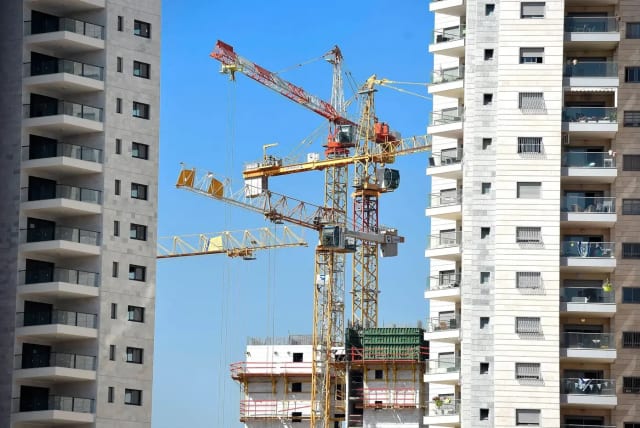Urban Renewal: Still strong despite the war

Resilience and progress in urban renewal despite local elections, interest rate hikes, and war.
According to the Governmental Authority for Urban Renewal, stability in the urban renewal market has been maintained throughout the year, with notable advancements in the development of evacuation-construction complexes in peripheral cities. This activity, as affirmed by Minister of Construction and Housing Yitzhak Goldknopf, will serve as a crucial platform for the recovery and renewal of cities in the southern and northern regions. Goldknopf emphasizes that this task will become the nation's most important mission post-war.
Building permits for approximately 9,000 housing units were issued by local authorities across the country, with 80% of them occurring in cities that have signed agreements with the Governmental Authority for urban renewal. In exchange for these permits, the local authorities are entitled to grants, amounting to a total budget of approximately NIS 124 million, which will be utilized to support the necessary infrastructure for the renewal projects.
Despite the challenges faced by entrepreneurs in promoting projects due to interest rate fluctuations and reduced demand, the grants provided by the government are considered instrumental in mitigating a significant decline in the volume of building permits. For the upcoming year, the government aims to sign similar agreements with additional local authorities to expedite the issuance of building permits.
In terms of planning, a total of 121 urban renewal plans were approved nationwide in 2023, encompassing around 41,000 housing units. This surpasses the government's target of 31,250 units set in the strategic housing plan.
Notably, efforts were made to focus on peripheral cities with high seismic risk, some of which are in close proximity to borders. The Governmental Authority for Urban Renewal conducted a comprehensive mapping operation, identifying 110 potential construction complexes along the Syrian-African Rift Line. These complexes have the potential to accommodate over 37,000 new apartments. Planning has already commenced for 25 of these complexes, with the intention to expedite planning for all of them through government grant programs. The economic viability of these complexes, due to low land values, necessitates government grants to ensure their implementation.
Furthermore, the Governmental Authority for Urban renewal initiated grant tender announcements to enhance the economic feasibility of renewal complexes in Ashkelon, Lod, and Kiryat Moshe in Rehovot, with a total budget of NIS 250m. Winners were selected in Lod and Rehovot, with four complexes allocated, while the tender process is ongoing in Ashkelon.
Moving forward, the focus in 2024 will be on expanding the planning and implementation of evacuation and urban renewal complexes, not only in cities directly impacted by the war, but also in areas that were previously considered outside the demand zones.
Minister Goldknopf expresses his commitment to maintaining continuity in the real estate market, including urban renewal, new construction, and rental housing, despite the challenges faced. He acknowledges the strength and resilience of the urban renewal market and appreciates the dedication of all partners in the real estate field.
Elazar Bamberger, CEO of the Governmental Authority for urban renewal, recognizes the accomplishments of the urban renewal market throughout a challenging year and highlights the market's advantages over new construction. Bamberger emphasizes the expansion of activity beyond demand areas, with the development of large-scale evacuation-rebuilding complexes in peripheral cities, signaling a new reality in the field of urban renewal.

